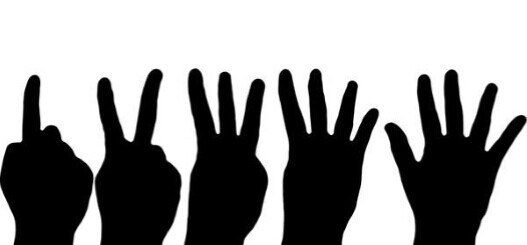
What Causes a Smashed Finger?
It is possible to smash your finger doing any number of activities at any time. Some of these activities most common for smashing a finger include:
- Closing the drawer on a desk or other furniture
- Closing a door
- Playing sports, particularly baseball
- Working with heavy wood pieces or concrete blocks
- Using a hammer
- Moving heavy furniture
What Are Symptoms of a Smashed Finger?
Injury to the finger through smashing can range from mild to serious and can even include breaking the finger. Common symptoms include:
- Discoloration or bruising of the finger or fingernail
- Difficulty moving the finger
- Loss of the finger nail
- Pain in the finger or fingers
- Swelling of the affected digits
- Bleeding of the finger
When to Worry
Seek medical attention right away if:
- You are unable to move or bend the finger.
- The injury involves more than the tip of the finger.
- The injury involves a joint.
- The injury is closer to the palm of the hand.
- The crushed area is full of dirt.
- The injury may be infected.
- The injury involves damage to the nail or nail bed.
- Your finger has a deep cut or open wound.
- Your injury has not improved or has worsened after a few days.
- There is a deformity to your finger.
- You think your finger may be broken.
In many cases, a smashed finger does not require medical attention and will heal on its own. However, if you have any of the serious symptoms mentioned above, you should seek medical help right away.
What Are Treatments?
In most cases, smashed fingers are mild and can be treated at home. There are a number of things you can do to treat your injury, though be aware that if any of the above serious conditions exist, you will need medical treatment.
1. Immediate Treatment
- Ice the injury. Icing the injury reduces swelling and can reduce bruising by slowing the bleeding into the affected area. Keep the ice on your finger for about 15 minutes at a time over the course of the first few hours. Keeping ice on the affected area for too long can lead to frostbite.
- Elevate the injured finger. Holding your injured finger up reduces blood flow thus reducing swelling and pressure. Don’t dangle your hand after you have smashed your finger.
- Move the injured finger. Be sure to move your finger gently. There may be some pain and throbbing but make sure to move it. If you cannot move your finger, then you should seek medical attention.
- Use over-the-counter medications. Taking a pain reliever such as ibuprofen or acetaminophen will help with minor pain and swelling.
Note: If you have a torn fingernail as a result of the injury, carefully clip away along the torn edge. Keep a bandage over the injured fingernail to protect against infection. For the next 7 days after removing the bandage, soak the affected fingernail in a salt water solution (1/4 teaspoon of salt to 8 ounces of warm water) at least once a day.
2. Medical Treatment
If there is blood under the affected fingernail and pain has increased, call your doctor. The doctor can guide you through a simple procedure you can do at home to relieve the pressure and prevent the nail from falling off. The procedure is as follows:
- Clean the injured finger.
- Unbend a metal paper clip or other similar piece of metal wire.
- Hold the paper clip with a pair of pliers and place the end into an open flame until it is very hot.
- Touch the hot tip of the paper clip to the injured fingernail where blood has pooled and the heat will burn a small hole into the nail.
- When the paper clip is removed and the hole is open, blood should release from the fingernail (If not, repeat the procedure).
- Clean the area and keep your injured finger clean and dry for 2 days.
Notes:
- This procedure can be repeated if blood continues to build up under the nail as the hole closes and pressure and blood rebuilds.
- Do not drain an injured fingernail unless your doctor has instructed you to do so.
- Do not apply a splint to the finger without first consulting your doctor.
- Do not wrap an injured finger. This can lead to further damage as air and nutrients cannot get the affected area to help the healing process.
Helpful Tips to Prevent a Smashed Finger
There are some steps you can take to help prevent smashed fingers and avoiding a serious injury. These include:
- Pay attention when getting out of a car or closing a door in your home.
- Teach children some basic safety techniques.
- Take special care when working with or moving heavy objects and materials.
- Follow safety guidelines when participating in sports.
- Use any safety devices.
- Pay attention to hand placement when working with a hammer and nails.
